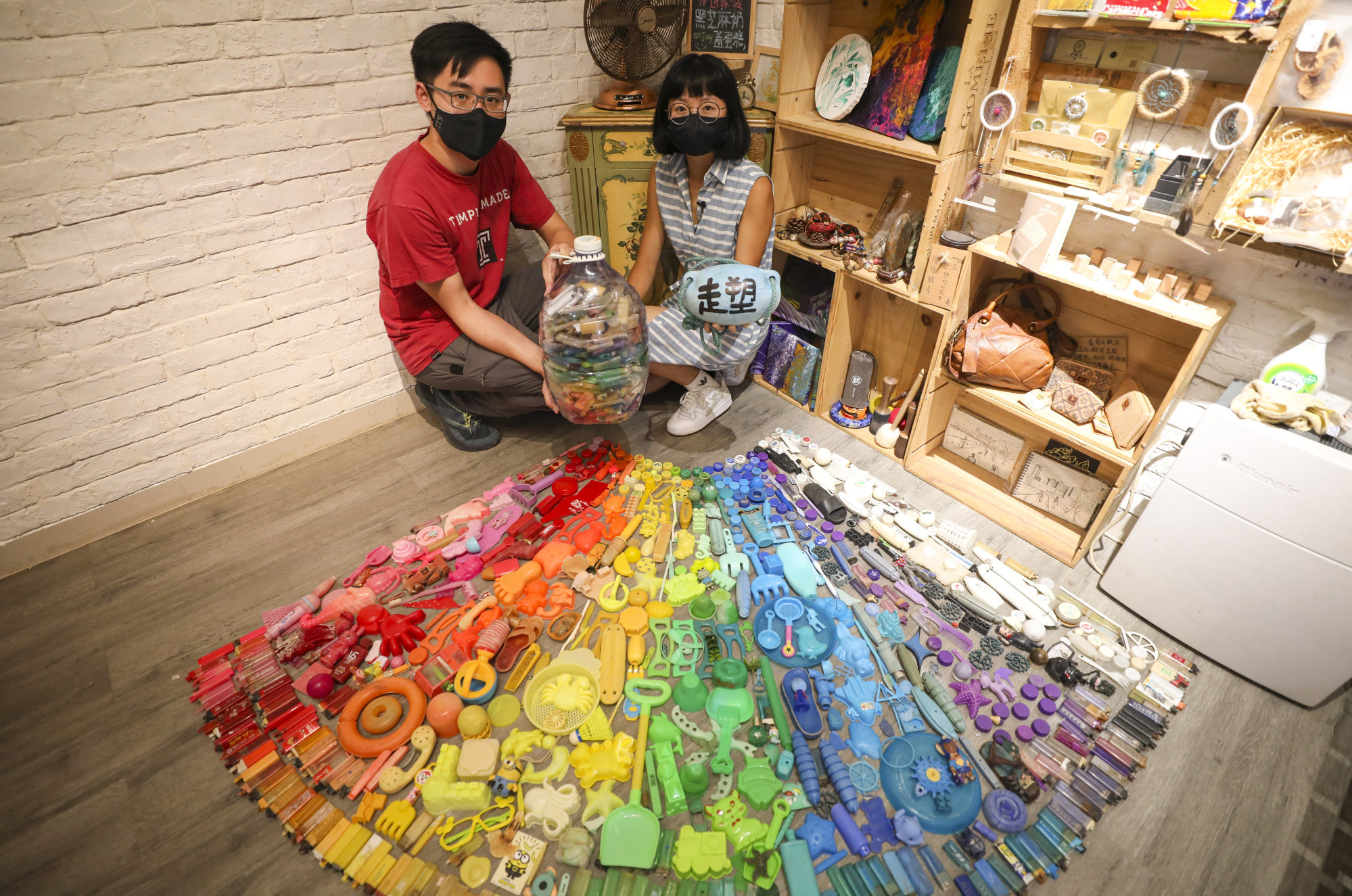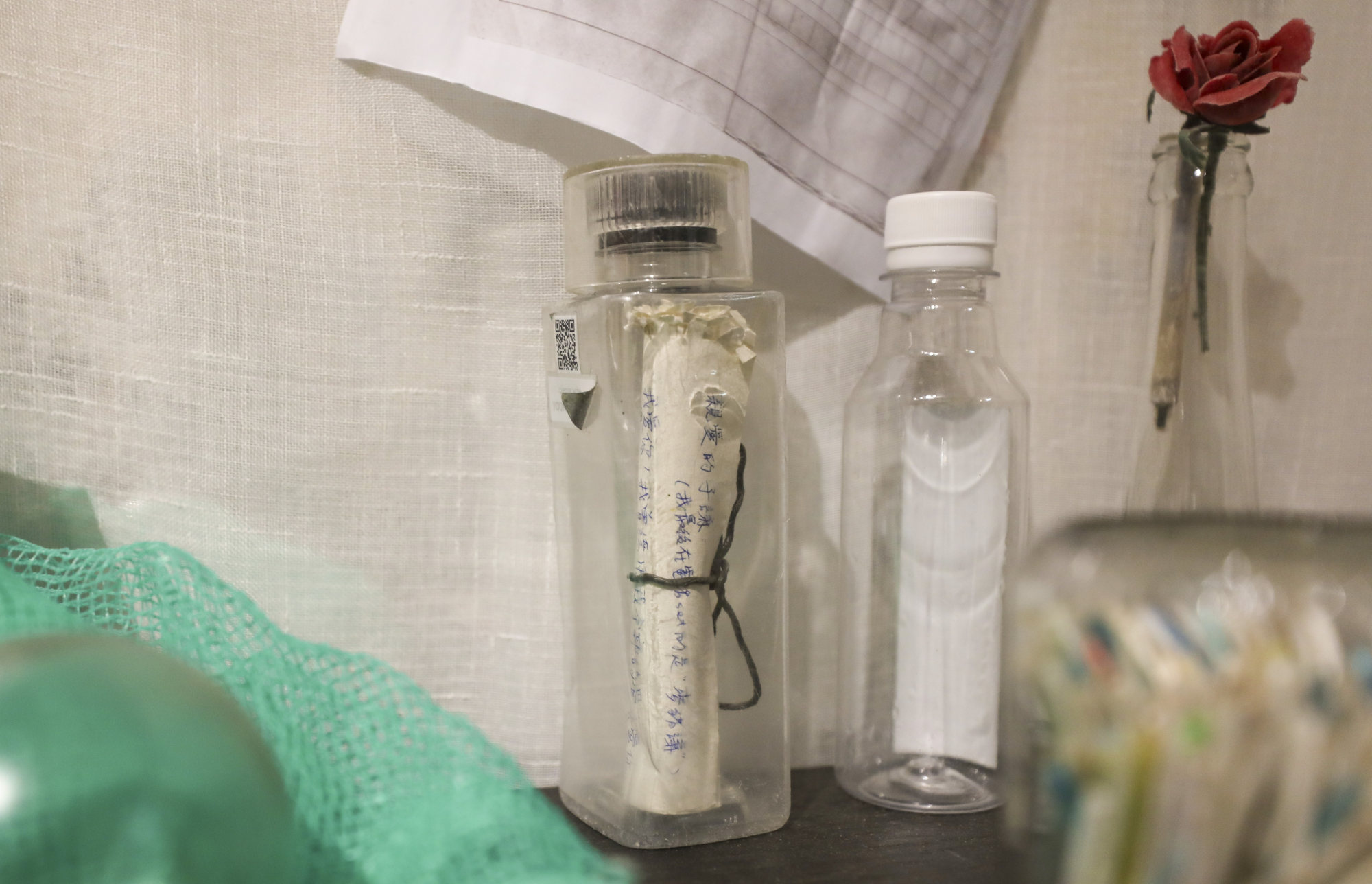
Masks, Covid-19 test kits, plastic bottles: more than 9,000kg of litter found on Hong Kong’s hiking trails, seashore last year, green group says
- Plastic bottles, bottle lids and buoys top three types of rubbish commonly found on seashore, while cigarettes, tissue paper and food packaging dot hiking trails, Ecobus says
- Group hosts monthly litter-collection activities as part of efforts to create database documenting garbage scattered around Hong Kong countryside
Masks, Covid-19 test kits, plastic bottles and rubber ducks were among the more than 124,000 pieces of litter an environmental group picked up from Hong Kong’s hiking trails and seashore last year, the total weight of which exceeded 9,000kg.
Other items collected by about 1,500 volunteers of Ecobus included lighters, old electronic devices, toys from more than 30 years ago and an identity document from the 1960s.
The green group hosts monthly litter-collection activities as part of efforts to create a database documenting garbage scattered around the city’s countryside.

Yeungs Yeung Ting, the group’s marine conservation officer, said that plastic bottles, bottle lids and buoys were the top three types of rubbish most commonly found on the seashore.
“We found more than 50,000 plastic bottles. If each of them is 20cm long, they will stretch for over a thousand kilometres when formed into one chain,” she said.
“Due to the ongoing pandemic, many masks and Covid-19 rapid antigen test kits also end up as litter in the countryside. We have collected 870 masks from the seashore and an additional 511 of them on hiking trails.”
Lighters and shoes were also common items found on the seashore, while cigarettes, tissue paper and food packaging were the top three types of litter picked up on hiking trails, Yeung said.

“We also discovered that more than 90 per cent of seaside litter, as well as 70 per cent of those on mountain trails, are made from plastic. Most of them are food-related waste, such as cutlery, packaging, bottles and cans,” she added.
The bulk of the garbage collected was a result of human activity on land and then washed into the sea through streams and sewage systems during rainy weather, Yeung said.
“A lot of plastic waste contains toxic pollutants, which may enter the food chain when it gets eaten by marine animals,” she said, adding the best way to solve the environmental pollution problem was for people to change their lifestyles and produce less waste.

Ng Hon-lam, who started the litter-collection initiative as part of his masters project at the University of Hong Kong in 2020, said he hoped to continue expanding the database.
“We hope to present any increase or decrease in the amount of garbage in the countryside through such data. It may also be used to evaluate the effectiveness of any environmental policies implemented by the government,” he said.
The green group has assembled the lighters of different colours into the shape of a rainbow as part of an exhibition on the garbage collected. The exhibition is being held in Kwun Tong on Saturday and Sunday.

